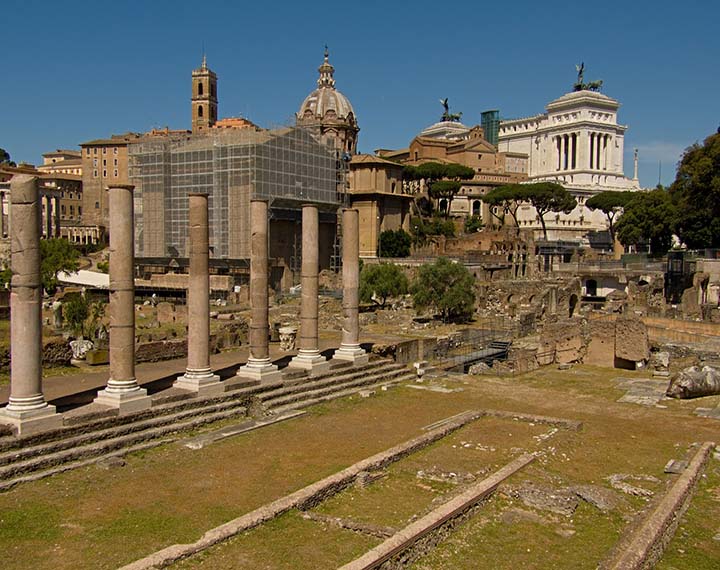
Tempio della Pace
Forum erected in the first century following the defeat of Jerusalem, with columns & statues. Statius claims that Emperor Domitian was largely responsible for the completion of the temple, not Vespasian – this issue remains controversial within the archaeological world today. The Temple of Peace is part of the Imperial Fora which is “a series of monumental fora (public squares), constructed in Rome over a period of one and a half centuries.” It is not officially considered a forum because there is no evidence of it serving a political function, therefore it is called a temple.
The Tempio della Pace was an integral part of the architectural and cultural landscape of ancient Rome, reflecting the grandeur and aspirations of the Roman Empire. While only remnants remain today, the archaeological site provides valuable insights into Roman history and architecture.
The Tempio della Pace, or Temple of Peace, was an ancient Roman temple located in the Roman Forum. Here are key details about the Temple of Peace:
- Construction: The Temple of Peace was constructed in the 1st century AD during the reign of the Roman Emperor Vespasian. Its construction was part of the larger building projects initiated by Vespasian, including the construction of the Colosseum.
- Purpose: The temple served multiple purposes, including being a place of worship and a symbol of peace. It housed works of art and cultural treasures, and its architecture was intended to convey the prosperity and stability of the Roman Empire.
- Location: The Temple of Peace was located on the Velian Hill, adjacent to the Roman Forum. Its strategic placement allowed it to be easily accessible and visible to those entering the Forum.
- Architecture: The temple was designed in the Corinthian order and featured grand colonnades. It was a large structure with a rectangular floor plan and had a central nave and side aisles. The interior was adorned with ornate decorations and artworks.
- Art and Cultural Treasures: The Temple of Peace housed a significant collection of art, manuscripts, and other cultural treasures. It is said to have accommodated the spoils of war brought back by Emperor Vespasian’s son, Titus, including items from the Jewish Temple in Jerusalem after the destruction of Jerusalem in 70 AD.
- History: The temple witnessed various historical events, including the celebration of military victories and the storage of valuable artifacts. It was damaged and restored multiple times over the centuries.
- Decline and Destruction: Like many structures in the Roman Forum, the Temple of Peace fell into disrepair over time. It suffered damage from fires and natural disasters. The temple was eventually dismantled, and its materials were repurposed for other construction projects during the Middle Ages.
- Archaeological Excavations: The site of the Temple of Peace has been the subject of archaeological excavations, revealing remnants of its foundations and columns. Visitors to the Roman Forum can see the archaeological remains of this once-magnificent structure.


